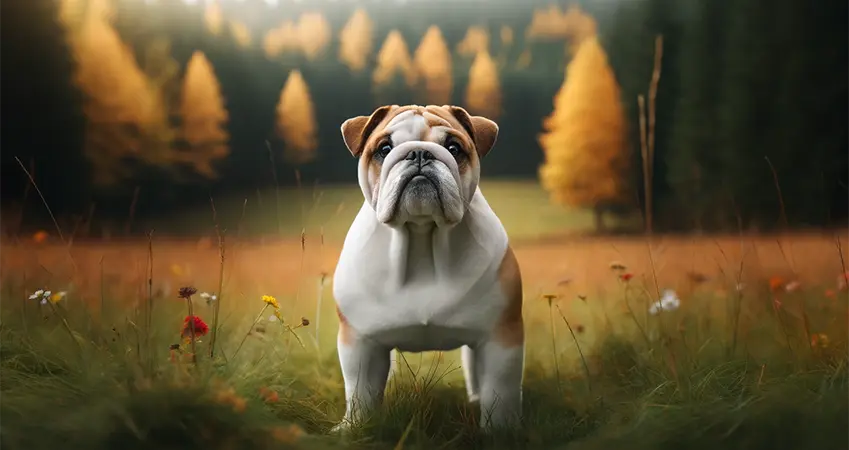Bulldogs, often known for their distinctive appearance and gentle disposition, are a beloved breed among dog enthusiasts. This comprehensive guide delves into the history, characteristics, care requirements, and health concerns of Bulldogs, providing a thorough understanding of these remarkable canines.

History of Bulldogs
The origins of Bulldogs trace back to England, where they were initially bred for bull-baiting, a popular sport in the 13th century. This violent past contrasts sharply with the modern Bulldog’s affectionate nature. Over the years, selective breeding transformed the Bulldog from a ferocious fighter into a loyal and loving companion. The breed’s journey from the bull rings of medieval England to the cozy homes of today is a testament to its adaptability and resilience.
Characteristics and Temperament
Bulldogs are easily recognizable by their muscular build, wrinkled face, and distinctive pushed-in nose. Despite their somewhat intimidating appearance, Bulldogs are known for their gentle and friendly demeanor. They are excellent family pets, displaying remarkable patience and affection towards children. Their calm and courageous nature makes them perfect companions for households seeking a loyal and low-energy pet.

Care and Maintenance
Caring for a Bulldog requires attention to their unique needs. Their short coat is relatively low-maintenance, requiring only regular brushing to keep it clean and healthy. However, Bulldogs are prone to overheating due to their brachycephalic (short-nosed) structure. It’s crucial to ensure they avoid excessive heat and have access to plenty of water and shade during hot weather. Regular vet check-ups are essential to monitor their health and address any potential issues promptly.
Bulldogs also benefit from a balanced diet tailored to their specific dietary needs. They are prone to weight gain, so portion control and regular exercise are vital. Despite their stocky build, Bulldogs do enjoy short walks and playtime, which help keep them physically and mentally stimulated.
Health Concerns
Bulldogs are susceptible to several health issues, primarily due to their unique physical characteristics. Respiratory problems are common due to their short snouts, making it essential to monitor their breathing, especially in hot or humid conditions. Skin issues, such as infections in their wrinkles, are also prevalent and require regular cleaning and care. Additionally, Bulldogs are prone to hip dysplasia, a genetic condition affecting their joints. Regular veterinary care and a healthy lifestyle can help mitigate these risks and ensure a longer, happier life for your Bulldog.

Training and Socialization
Training a Bulldog can be a rewarding experience, though it requires patience and consistency. Bulldogs are intelligent but can be stubborn, making positive reinforcement techniques particularly effective. Early socialization is crucial to help Bulldogs develop into well-adjusted adults. Exposing them to various environments, people, and other animals can reduce the likelihood of behavioral issues and ensure they grow up to be confident and sociable pets.
Conclusion
Bulldogs are more than just their iconic appearance; they are loving, loyal companions with unique needs and characteristics. Understanding their history, temperament, and care requirements is essential for any prospective Bulldog owner. By providing the proper care, attention, and love, Bulldogs can become cherished members of any family. Whether you’re drawn to their gentle nature or their distinctive looks, Bulldogs offer a rewarding pet experience filled with affection and companionship.







